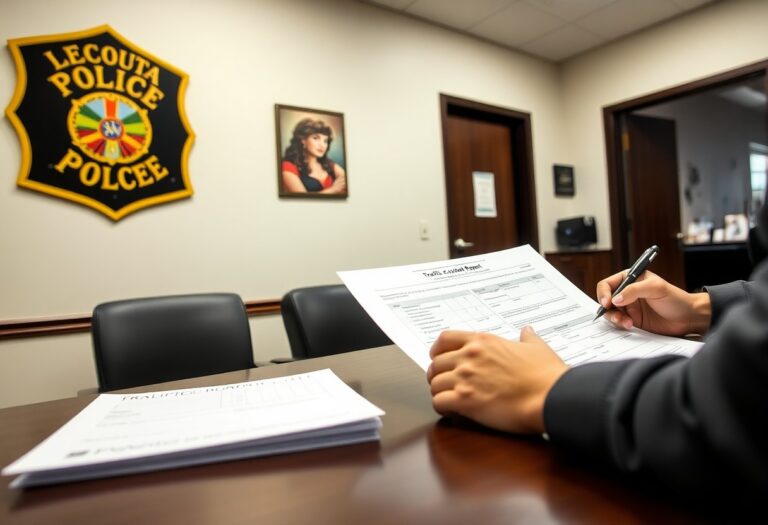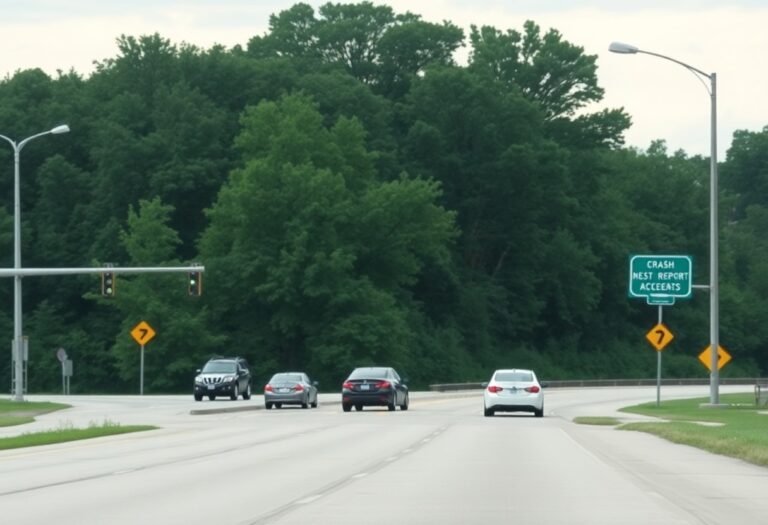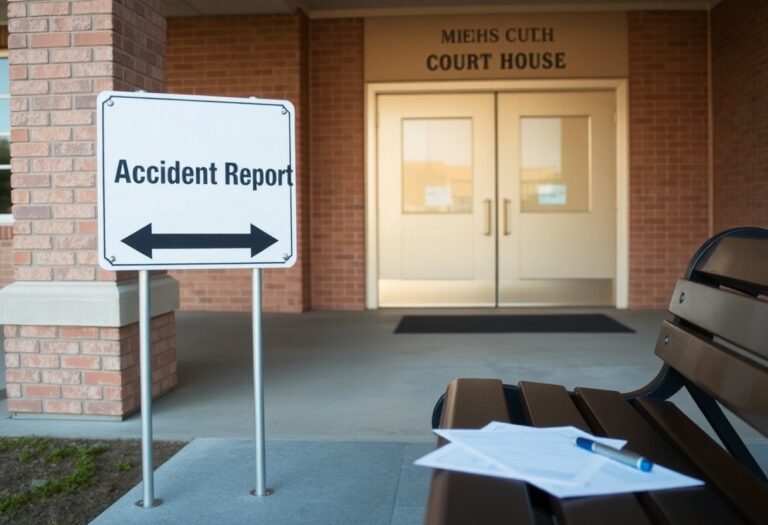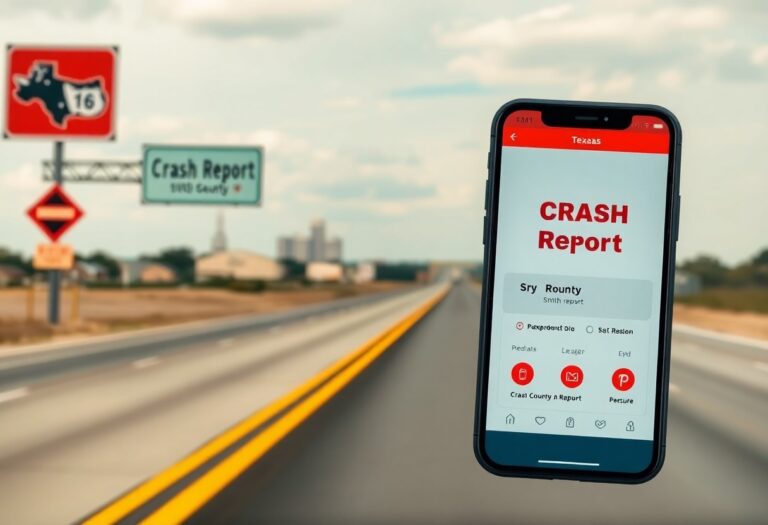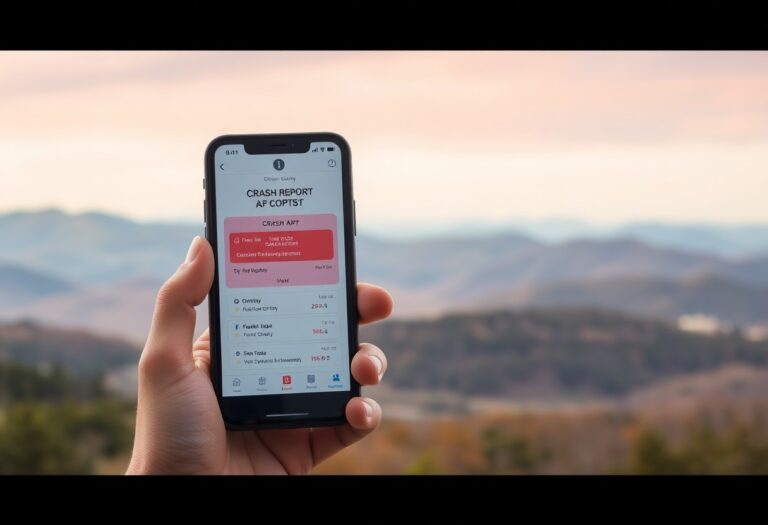Most drivers in Carbon County, Utah, may find themselves involved in a car accident at some point, making it vital for you to understand how to obtain car accident reports. These reports are key documents that provide important details about the incident, including fault determination and insurance claims. In this guide, you will learn the step-by-step process to quickly and efficiently acquire your report, ensuring you navigate this potentially stressful situation with ease and confidence.
Unpacking the Legal Framework of Car Accident Reports in Carbon County
The legal framework surrounding car accident reports in Carbon County is shaped by both state statutes and local regulations. Each accident triggers specific documentation requirements that ensure all crucial details are recorded accurately, providing a basis for any future legal action. You’ll find that compliance with these regulations is not just important for legal accountability, but also instrumental in streamlining insurance claims and preserving your rights post-accident.
The Role of Utah State Law in Car Accident Documentation
Utah state law mandates that drivers involved in a car accident must report the incident to law enforcement if there are injuries, fatalities, or property damage exceeding $1,500. This requirement ensures that accurate records are maintained, aiding in legal proceedings and insurance claims. Understanding these obligations can help you navigate the complexities of post-accident processes more effectively.
Key Legal Terms and Their Implications for Accident Reporting
Familiarity with key legal terms like “fault,” “negligence,” and “damages” is crucial when reporting accidents in Carbon County. When you provide your account of an incident, recognizing how these terms apply can significantly influence the outcome of your case. For instance, the concept of “fault” can determine liability, impacting insurance payouts and potential settlements.
In cases of car accidents, “negligence” refers to the failure to exercise reasonable care, which may establish liability for the damages incurred. Alternatively, “fault” relates directly to who is deemed responsible for the accident, often assessed through police reports and witness statements. Understanding these terms not only helps clarify your situation but also positions you better in discussions with insurance agents and legal professionals. Being well-versed in these legal concepts empowers you to advocate for your rights effectively, ensuring you follow the right procedures to achieve a fair resolution.
Step-by-Step Guide to Obtaining Your Car Accident Report
| Step | Description |
| 1 | Identify and contact the appropriate law enforcement agency that responded to your accident. |
| 2 | Gather necessary information such as date, location, and involved parties. |
| 3 | Complete the required request forms and pay any associated fees. |
| 4 | Submit your request and wait for processing. |
| 5 | Receive your report, usually via mail or online, depending on the agency. |
Identifying the Correct Law Enforcement Agency
To obtain your car accident report, start by identifying the law enforcement agency that handled your case. This is typically the police department or sheriff’s office that responded to the scene. You can find this information on any documentation provided to you at the time of the accident, or through a simple online search based on the accident’s location.
Navigating the Request Process: Forms and Fees
The request process involves submitting specific forms to the agency alongside any applicable fees. Each agency in Carbon County may have different procedures and cost structures, so you should check their website or contact them directly for precise details. Generally, fees can range from a nominal charge to around $15 for obtaining the report.
Understanding the forms and fees is vital for a smooth request process. Most law enforcement agencies provide downloadable forms on their websites, which you can fill out ahead of time. Fees often vary, but typically, reports are issued for a fixed rate. If you’re filing in person, bringing cash or a credit/debit card is advisable, whereas if submitted via mail, a check may be needed. Always keep a copy of your request submission for records.
Understanding the Timeline: From Request to Receipt
Once you’ve submitted your request for a car accident report, it’s necessary to know what to expect regarding the timeline. Most agencies indicate that reports can be processed and made available within 5 to 10 business days, although this may vary based on their workload and specific processes in place.
The timeline for receiving your report can differ significantly depending on the agency’s capacity. Some may offer expedited services for urgent situations, while others might require longer wait times for larger requests or during busier periods. Tracking your request is often an option, and contacting the agency after a reasonable waiting period can ensure you’re updated on your report’s status.
Essential Elements of a Car Accident Report That Matter
In any car accident report, crucial details are highlighted, including the date, time, and location of the incident, and the involved parties’ information. Key facts about the vehicles’ involved, insurance details, and any injuries or damages are crucial components. The narrative description provides context, helping to piece together the sequence of events. You will also find any witness statements or police observations, which can support your claim or usage in potential legal proceedings.
Decoding the Critical Information Captured
The critical information captured in car accident reports consists of factual elements such as vehicle identification numbers, driver’s licenses, and license plate numbers. Officer observations regarding the conditions of the roads, weather, and traffic flow provide a comprehensive background for the accident. Each piece of data serves to clarify what occurred, establishing a clearer picture of liability and contributing factors.
Analyzing the Impact of Report Content on Insurance Claims
The contents of a car accident report significantly influence your insurance claim process. Insurers use these reports to assess liability and determine payout amounts. The factual accuracy in a report can either strengthen or weaken your claim, depending on how clearly and objectively the incident is documented. If discrepancies exist, they can lead to delays or denials of your claim.
Understanding how report content impacts your insurance claims enables you to recognize its importance. For instance, if the report indicates you were at fault or did not follow traffic laws, your insurance provider might challenge your claim, potentially leading to increased premiums or denial of benefits. Conversely, a well-documented statement from a neutral witness can bolster your case, increasing the likelihood of a favorable outcome. Always inspect the report closely and ensure all details are accurate to protect your interests in the claims process.
Common Errors and How to Spot Them
Errors in car accident reports can range from misspellings of names to inaccurate descriptions of events. Spotting these common mistakes early allows you to request corrections before submitting them to your insurance company. Pay particular attention to dates, times, and locations, as well as the details of the accident narrative, to ensure everything matches your recollection of events.
Identifying common errors entails scrutinizing every section of the report for discrepancies. For example, a minor detail like a road name misspelled or an incorrect vehicle model can result in significant misunderstandings. Overlooked errors can lead to complications in your insurance claims, so if anything seems amiss, promptly contact the reporting agency to facilitate amendments. Ask for clarification if witness statements do not align; even routine details can influence how claims are processed and perceived by your insurer. Taking the time to ensure an accurate report contributes to a smoother insurance claims process.
Strategies for Disputing Inaccurate Accident Reports
Disputing inaccurate accident reports requires a systematic approach. Start by carefully reviewing the report for errors or discrepancies. Gather relevant information and documentation to strengthen your case, such as eyewitness accounts, photographs, and other evidence. Presenting a clear argument with supporting details can significantly improve your chances of having the findings amended or corrected.
Formal Methods to Challenge a Report’s Findings
To challenge a report’s findings formally, submit a written request to the relevant law enforcement agency, detailing the inaccuracies and presenting your objections. Include specific evidence that supports your claims, such as witness statements or photographic evidence. Be sure to follow any outlined procedures and deadlines, as the agency will have its own policies regarding report disputes.
Gathering Evidence: Building Your Case
Your argument becomes significantly stronger when you gather compelling evidence. Secure eyewitness accounts, take photographs of the accident scene, and gather relevant documents such as medical records and police statements. Consider keeping a detailed diary of your recovery process if injuries were involved. Each piece of evidence contributes to a comprehensive picture, reinforcing your perspective on the incident.
Building your case means being thorough in obtaining all possible evidence. For instance, gather names and contact information from witnesses who can corroborate your version of events. If available, obtain video footage from surveillance cameras in the vicinity. Document how the inaccuracies in the report impacted your recovery, finances, or personal life. A complete and well-supported argument will enhance your credibility when disputing your accident report.
Engaging Legal Advice: When to Seek Professional Help
Consulting with an attorney experienced in traffic accident cases can provide valuable insights into the dispute process. If your case involves significant damages, complexities, or potential legal implications, professional guidance becomes increasingly necessary. They can assist with drafting your dispute formally, ensuring all legal nuances are correctly addressed.
Legal professionals bring expertise that can navigate the intricacies of the dispute process effectively. They can help you understand your rights, outline feasible legal strategies, and represent you during negotiations with insurance companies or law enforcement. Additionally, they can identify potential weaknesses in the accident report and help strengthen your argument based on their experience with similar cases. This support can prove advantageous, especially if your claim escalates to litigation.
The Role of Car Accident Reports in Personal Injury Claims
Car accident reports serve as a foundational element in personal injury claims, providing vital documentation that captures the circumstances surrounding an accident. You can refer to these reports to present factual accounts of the collision, including the involved parties, locations, and any cited traffic violations. This information can significantly influence the outcome of your claim, aiding in the determination of liability and providing a clearer picture of events, which ultimately strengthens your case.
How Reports Support Legal Arguments During Settlement Negotiations
Settlement negotiations heavily rely on the information contained in car accident reports. They help to clarify the facts of the case and provide a basis for your demands, enabling you to present a strong argument for the compensation you deserve. Accurate details about the accident can emphasize liability, paving the way for negotiations to be more favorable to your claim.
The Link Between Report Details and Compensation Outcomes
The details outlined in car accident reports directly correlate with compensation outcomes. Specifics such as traffic violations, weather conditions, and witness statements can all affect how compensation is calculated. Adjusters often weigh the content of these reports to assess the severity of injuries and damages, shaping the final settlement amount you receive.
For instance, if a report indicates that the other driver was at fault due to a traffic violation, this can enhance your position in negotiations, potentially resulting in a higher compensation award. Conversely, reports lacking crucial details or containing inaccuracies might weaken your claim, leading to lower offers. Therefore, ensuring that the accident report is thorough and accurately reflects the situation is vital to maximizing your compensation outcomes.
Conclusion
As a reminder, navigating the process of obtaining car accident reports in Carbon County, Utah, can be straightforward when you know what steps to take. By understanding the requirements and utilizing the available resources, you can efficiently secure the necessary information following an accident. Whether you need the report for insurance purposes or legal proceedings, knowing your rights and responsibilities will empower you in this process. Always ensure you have all your documentation ready, so you can retrieve your report promptly and move forward.







